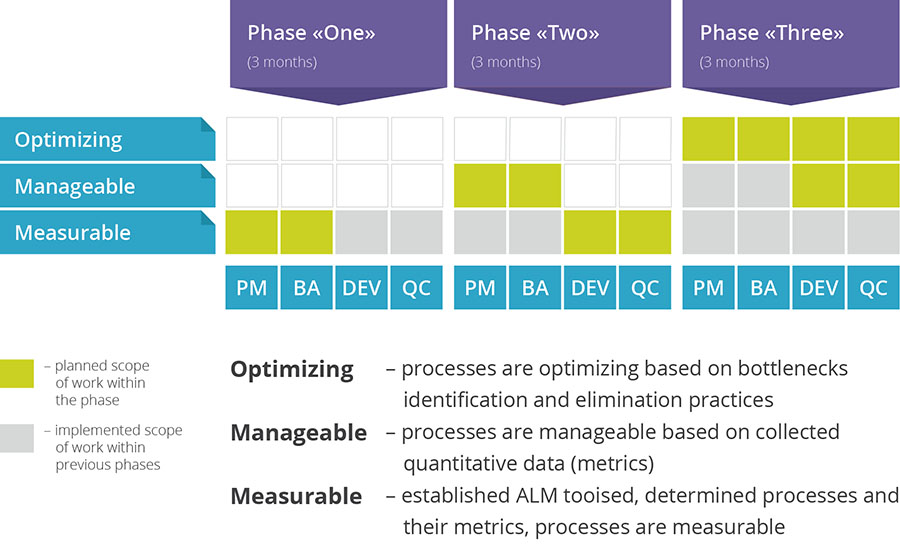Business Challenge
In an effort to keep up with the emerging market, our client’s growth strategy relied on rapid in-house and 3rd party solutions that enabled deployment and scaling of new telecom services with minimal TTM (Time-To-Market). While the strategy was extremely successful in gaining dominant market share, it came at a high cost with a heterogeneous and redundant software and services infrastructure, managed by different teams without a single and unified Application Lifecycle Management (ALM) methodology and toolset.
As a result, the Total Cost of Ownership (TCO) of their business and IT systems was much higher than the industry average. Their three main challenges included:
- Cost of SDLC (which was one of the major components in the TCO)
- Lack of process transparency and predictability
- IT engineering resource allocation and workload
Project Description
Our client partnered with SoftServe to create an effective strategy to address their business challenges at the root level while at the same time minimizing risks associated with its execution. The collaborative team used a phase-based approach to provide valuable output by incorporating early client feedback and increasing the maturit y levels of the processes.
- In the first phase, the team established a unified ALM ecosystem based on Microsoft’s toolset integrated with its own and 3rd party solutions. The processes, metrics and KPI’s were specifically defined for measuring the team’s productivity and performance.
- In the second phase the team centralized the artifacts management processes (i.e., requirements, tasks, tests, defects) to ensure proper artifacts traceability during the project execution, providing quantitative metrics across the entire SDLC.
- The third phase included the root-cause analysis and risk identification/elimination. This phase established and improved engineering and quality control practices, ensuring significant processes optimization.

Value Delivered
SoftServe’s strategy and phased approach helped the client:
- Increase the team’s productivity by 15% while maintaining the highest level of quality.
- Reduce the overall time to market by eliminating reworks and providing control & visibility in resource allocation.
- Improve the predictability of the software in time, scope, quality and cost through qualitative and quantitative data, resulting in tens of thousands dollars savings annually.
- Lower operational costs by 20% and reduce risk as a result of the IT infrastructure reorganization.


